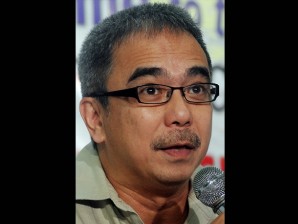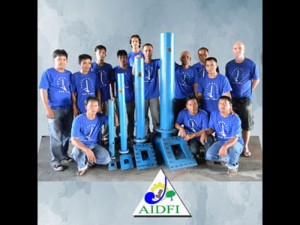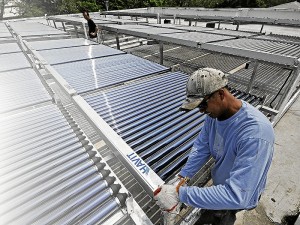Published :
Sunday, October 16, 2011 00:00
Written by :
Josef T. Ramos , Correspondent

MOTIVATED by great ambition to pursue a higher goal, five young
mechanical engineering students from Mapua Institute of Technology have
shown the entire world how good Filipinos are in terms of creation,
competition and technological innovation.
Team “Siklab,” composed of Matthew Mamangun, Ken Erick Naval,
Jeremaine Lampitoc, Jerick Apetrior, Justin David Villegas and Jaylord
Jauod, surprised all their competitors in the 2011 Bosch Power Tool Asia
Cordless Race Finals tournament held on September 21 to 23 in Beijing,
China.
After capturing the Bosch Cordless Race 2011 Philippine
Leg crown and the Best Kart Design award, Siklab didn’t waste any
opportunity when it represented the country in that Asian level
competition by winning the third place honor and the Asia’s Best Design
Award.
The five promising students, who are inspired by Bosch’s
cordless power tools, have taken the challenge to assemble and design a
go-kart powered by Bosch’s high-tech cordless lithium ion power tools to
prove the world that Filipinos are among the brightest mechanical
engineers.
“There are many good Filipino inventors in our country
right now but they are not properly supported by the government,”
Siklab team leader Mamangun, a graduating student, told The Sunday Times
Magazine in an interview on October 14 at the Bosch Office in Fort
Legend Building in Bonifacio Global City.
“I guess this is the right opportunity to tell them to support the Filipino inventors.”
In
terms of development and promotion of electric-powered car and the
green technology in vehicles, Mamangun emphasizes that it is already
familiar with most countries particularly in Japan and some European
nations.
“There’s nothing new in ‘green technology’ most
countries are using it by now,” he said. “Filipinos can do it as well
[in terms of inventing an electric powered car], but you are talking of
millions here if once the government decides to implement and support
this.”
SiklabSiklab placed third overall
behind overall champion Thailand (1’47” 127) and second place host
China (1’ 53” 841) with a time of one minute 57 seconds” 841 at the
Juyongguan Great Wall Open Space in
Beijing, China.
Despite
being a third placer in the race, the Filipinos gained respect from the
crowd, according to Mamangun. The Filipinos amazingly outraced Malaysia
and highly favored South Korea.
“We could win the overall title
during the event if only timing and luck we’re on our side. We got a
good kart design,” said Naval, who is the smallest guy in the group who
can fit inside the kart. “If given a chance again, we’re going to win
the overall title since we know what to do now.”
Before earning a
Beijing ticket to represent the Philippines in the Asian race event,
Mapúa dominated the Philippine leg at the Boomland Kart Track in May
inside the Cultural Center of the Philippines Complex in Pasay City with
a 57.437 time record.
Finishing second and third respectively
were University of the Philippines (UP) (1:04.709) and University of San
Carlos Cebu (1:06.892).
Mapua also received P100, 000 besides qualifying in the Beijing race.

The
other teams that competed in the Philippine leg were University of
Mindanao, Colegio de San Juan de Letran Manila, Don Bosco Mandaluyong
and Rizal Technological University.
For placing second in the
Philippine leg, UP also qualified in the Asian Bosch Cordless race and
finished seventh overall with 2’17” 628 time.
For winning the best kart design, Siklab also took home 1000 Euros and new Bosch Power Tools.
Mamangun
said the Siklab Kart had “no gear box” unlike any other participating
go-karts during the Beijing race since the race track wasn’t that wide
and long.
“We have a good acceleration and gear box isn’t
advisable to a short race track,” he said when asked by one reporter in
China.
‘Thankful’Mamangun, 21, and his
members are so thankful to their classmates, relatives, friends for the
all-out support. They appreciate the Bosch Philippines’ support too in
their campaign during the race by providing all the tools and gadgets
they needed.
“Our parents and some classmates even went there in China to
cheer for us,” he said. “It’s really motivating when they cheered for
you. They inspired us and we just wanted them to be happy.”
Jerick
Apetrior, 19, the youngest among the boys, who was in charge for safety
and finance, said their team would win the overall title if given
another chance to compete in the same tournament for the next two years
or even next year.
But that is impossible to happen since all
teammates are all graduating students this year and the next Asian Bosch
Cordless Race may happen in 2013.
“Thailand did it absolutely
right. They are very good in automobile works and good technology,” said
Apetrior. “At the same time, they performed well during the race. But
if given another chance, we’ll assure anybody that we will bring home
the overall title.”
Chief mechanic Jeremaine Lampitoc, however,
keeps telling the technology of Thailand and China isn’t that far
advance compared to them since their time gaps weren’t that far. “They
had mistakes too during the race, but those were not enough to hold them
off.”
Lampitoc says everybody contributed well in the team
and did their part. “We prepared hard for this and we’re so thankful
that our hard work had paid off well. What important now is we can write
something big in our resume when we apply for work.”
Although
adviser Jaylord Jauod and logistic head Justin Villegas were not around
during the interview because they attended some important matters,
their teammates said they shared valuable contributions too during the
race.
School prideA few weeks after their
arrival from Beijing, China, the Mapua students have proven that real
school pride comes from academic achievements and not only from
recreational or achievements in sports, which are very popular since
then.
“It’s not only the sports that give pride and popularity
to a school,” said the fifth year Naval. “We like to clarify that
academic achievements remain the most important and higher
accomplishment a student can bring to his own school.”
William
Go, the Bosch Philippines country sales director, told STMs in a
separate interview that he is “proud to be a Filipino” after the
Filipino student delegates in China had received their awards in front
of other countries.
“I was inspired, really. I’m already
36-year-old and I just now experienced this kind of moment,” said Go,
who helped Bosch Philippines to organize the race here in the country
last May. “This is the first time we support these students and the
result is very unforgettable.”
Promoting the Bosch products is
their main job as far as Go’s job is concerned, but he doesn’t expect to
keep promoting the Mapua and the UP students and as well as the country
after accomplishing something great in Beijing.
He also says
that Bosch provides students the opportunity to learn and have the
courage to excel in their professions. “How many kids in the country can
build a car? Bosch is always here to support different advocacies just
like that.”
“Innovation and skills transfer is an important part
of the Bosch philosophy. The [cordless race] championship provides
engineering students a challenge in creating race karts powered by Bosch
tools and the Filipinos proved they can compete there,” said Go.
“I’m
thankful to all the students who participated in the cordless race and
we’ll guarantee everybody that we’ll sustain this program for the
benefit of the students.”
http://bit.ly/riGvZo







